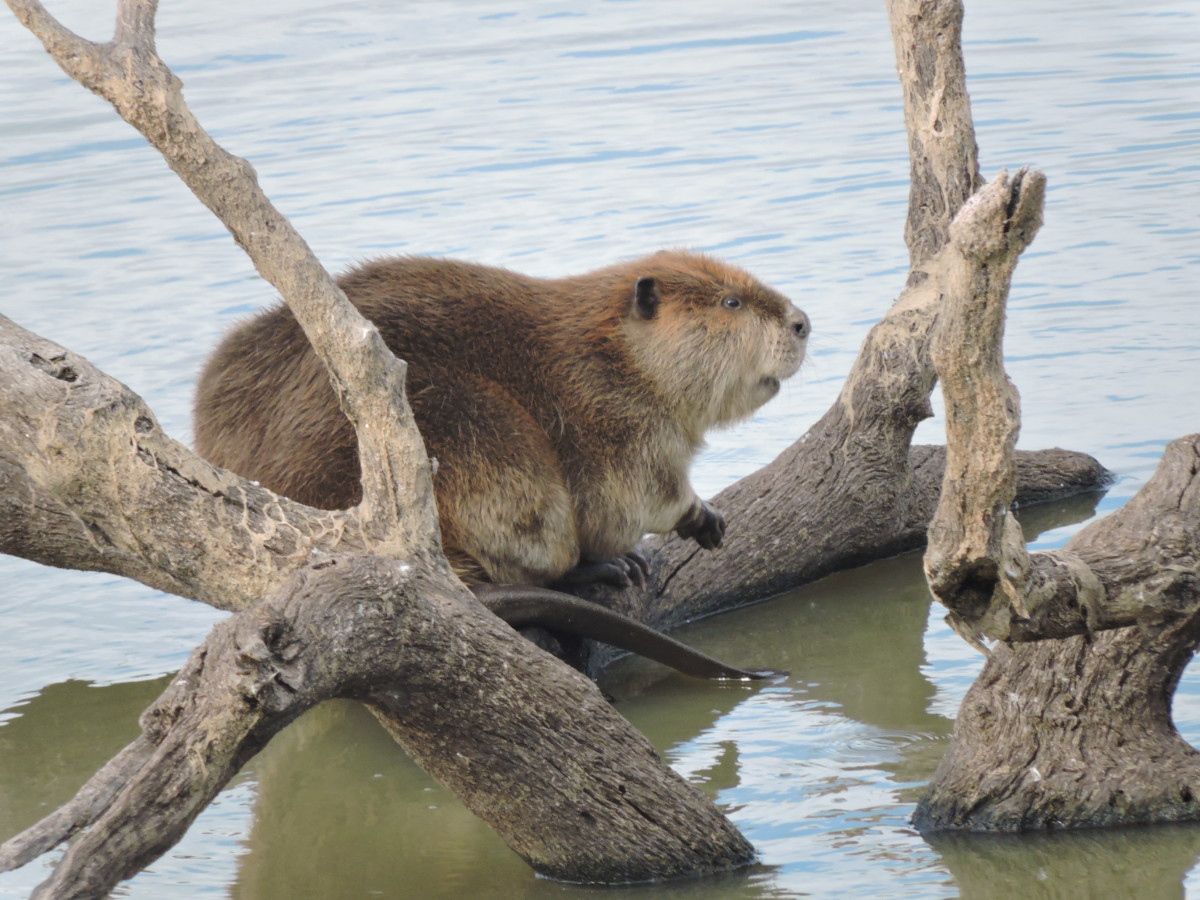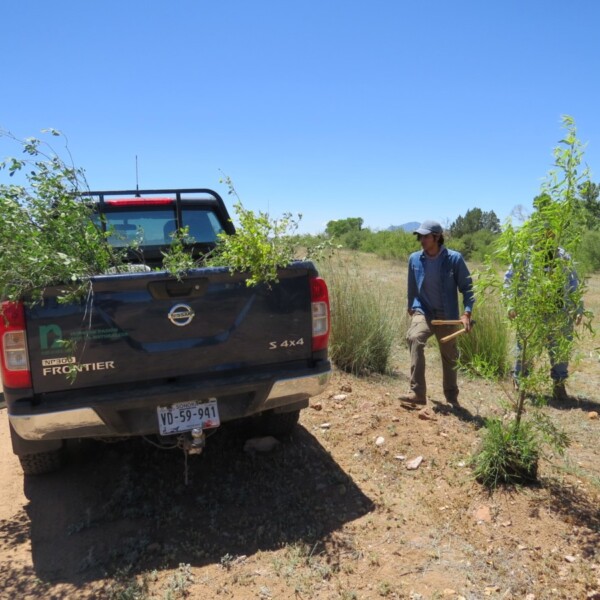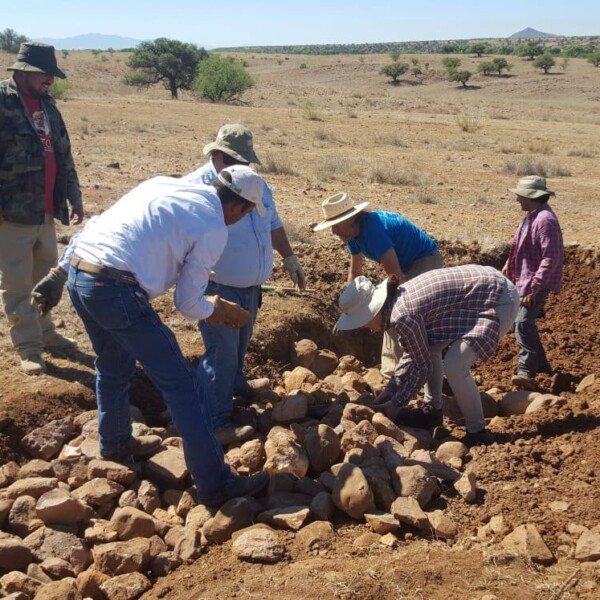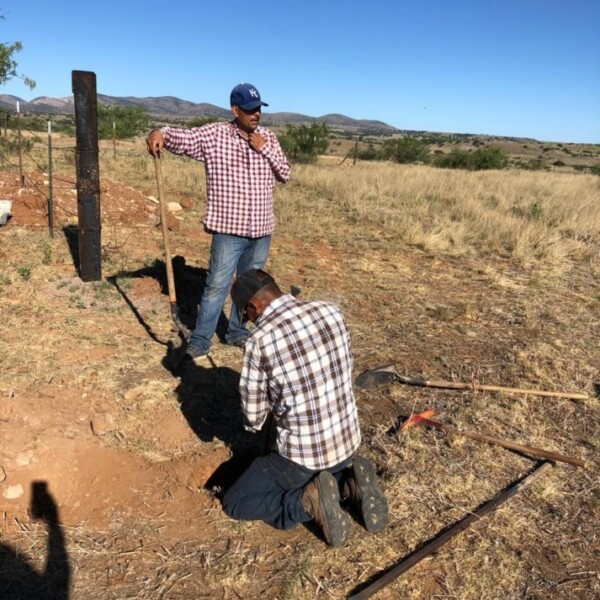Rancho Los Fresnos is vital protected Mexican land directly south of Coronado Memorial and Coronado National Forest in the southern Huachuca Mountains. Managed by our partners, Naturalia, this ranch is part of our binational Border Wildlife Study and a focus of our Sky Island stewardship work this year.

One of the largest ciénegas in Los Fresnos. Photo credit: Naturalia
Los Fresnos means “the ash trees” in Spanish. Ash trees (Fraxinus spp) are in the Oleaceae family—the family of olives and jasmines—that are widespread across the entire northern hemisphere. In some places of Mexico people call ash trees madre de agua, meaning “mother of water”, because ash trees tend to grow near springs and streams where they are an integral part of riparian ecosystems. So perhaps you can already guess why Rancho Los Fresnos is named after these wonderful trees. You guessed right! Los Fresnos is home to a system of springs, streams, and wetlands that are of paramount importance for ecosystems and people alike, providing healthy water flows and refuge for wildlife across the western upper watershed of the San Pedro River. These freshwater ecosystems are so important, that nearly 400 species of migratory birds can be found here, including two large endangered raptors in Mexico—the bald eagle (Haliaeetus leucocephalus) and golden eagle (Aquila chrysaetos).
However, preserving the integrity and functionality of these critical ecosystems is not a simple task. It requires constant restoration, reforestation, and monitoring efforts to ensure that these lands can withstand or recover from the impacts of soil erosion, extreme heatwaves and drought, fire, invasive species, and livestock grazing. Fortunately, thanks to a collaboration between Sky Island Alliance, the U.S. National Park Service, and Naturalia, Los Fresnos has lately been receiving quite a bit of attention and care.
During the last few months, with funding from the Sister Parks Program of the National Park Service, Naturalia has implemented some serious stewardship actions at Los Fresnos including planting of 1,000 native species such as cottonwood, willow, ash, and even agaves. Naturalia’s staff has also been monitoring several fertile islands, which are patches of land that were enriched with native pollinator plants to improve habitat for different pollinator species. But the most important work has perhaps been the protection of springs from livestock activity through the installation of exclusion fences. Exclusion fences are designed to keep livestock away from springs and other wetlands without preventing the passage of wildlife. Without exclusion fences, springs tend to deteriorate rapidly due to excessive grazing, erosion, and contamination from livestock feces that can lead to water eutrophication, and transmission of water-borne zoonotic diseases. As you can imagine, this type of work is extremely important because it helps maintain healthy and abundant waterflows across the upper watershed of the San Pedro river, the last free flowing river in the entire southwestern United States.
This is just a small example of the important work that organizations like Naturalia are doing in Mexico. Ecosystems, water and wildlife so not recognize political borders and so we have to do our best to work together across those borders for the wellbeing of our extraordinary Sky Islands. By the way, Naturalia’s staff has do not do all that wetlands stewardship work by themselves; they have received very substantial help from beavers – world famous wetland engineers, that you can see here and in our picture below!
Learn more about Naturalia here and see the first Border Wildlife Study from Mexico here.

Beaver (Castor canadensis) in rancho Los Fresnos. Photo credit: Naturalia



